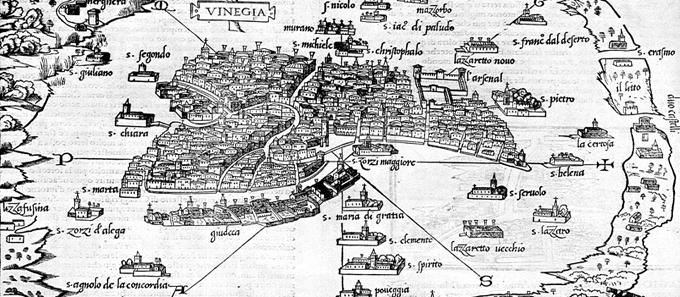
Historical Studies Seminar The Divided City

The Divided City is the general title of the historical studies seminar, which, as usual is spread over five half days. The focus will be on the divisive factors found over the centuries in urban history, even in Venice, despite being admired, as long as it was a city state, for its regime of social peace, free of Guelphs and Ghibellines, uprisings and revolts. Indeed the arsenalotti (Venetian shipyard workers) seem almost tame compared to the rebellious Florentine ciompi (wool carders). Although characterised by strong class differences, Venice as a capital city (here reproduced in an image of 1528) never witnessed the clamorous episodes of class struggle found elsewhere. Similarly, in Venice the rivalry between patrician families was never exasperated to the extent that it troubled the whole city, unlike the Verona of the Montecchi and the Capuleti.
Nonetheless, the erection of Emilio Marsili’s monument to Paolo Sarpi in Venice in 1892 did cause a clash between clerics and secular forces similar to the conflicts after monuments were raised to Arnaldo da Brescia in Brescia and Giordano Bruno in Rome. The fact remains that as the foundation for peaceful coexistence, shared presuppositions and harmony, the city (the civitas, the result and expression of civilitas) per se brings people together in a common life, unified as it is by its surrounding walls. But at the same time from its outset, the city has witnessed tensions and lacerations: Rome, the city by antonomasia was born out of a crime when Romulus slew Remus. Augustine’s civitas Dei was one matter, the earthly city quite another. Ancient Rome was always troubled: patricians against plebs, and the birth of Imperial Rome prevaricating over Republican Rome.
The speakers at the seminar will discuss this and other issues in the form of an extended debate, involving harmonious, dissonant, converging and diverging views.
